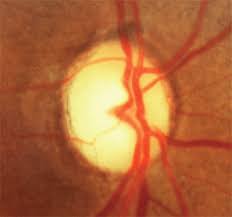

Glaucoma
Glaucoma is a group of eye diseases that gradually steal sight without warning. In the early stages of the disease, there may be no symptoms. It is estimated that half of the people affected by glaucoma may not know they have it.
Vision loss is caused by damage to the optic nerve. This nerve acts like an electric cable with over a million wires. It is responsible for carrying images from the eye to the brain.
It was once thought that high pressure within the eye, also known as intraocular pressure or IOP is the main cause of this optic nerve damage. Normally, the fluid, called aqueous humor, flows out of your eye through a mesh-like channel. If this channel gets blocked, the liquid builds up. That’s what causes glaucoma. Although IOP is clearly a risk factor, we now know that other factors must also be involved because even people with “normal” levels of pressure can experience vision loss from glaucoma.
TYPES OF GLAUCOMA:
Open angle glaucoma is the most common type of glaucoma, occur when ocular fluid cannot pass through the eye’s filtration system (trabecular meshwork) to the drainage channels. It is the most common type of glaucoma damaging vision gradually and painlessly. The pressure is rarely high enough to be symptomatic. An examination of the optic nerve by an ophthalmologist is essential for early detection
Closed angle or narrow angle glaucoma. It’s less common in the West than in Asia. You may also hear it called acute or chronic angle-closure or narrow-angle glaucoma. Your eye doesn’t drain right because the angle between your iris and cornea is too narrow. Your iris is in the way. This can cause a sudden buildup of pressure in your eye. It’s also linked to farsightedness and cataracts.
Key points to remember to minimize the risk of glaucoma:
Glaucoma detection needs regular follow-up since the condition can cause asymptomatic and irreversible loss of vision if poorly treated or neglected. Have a routine eye check every 18 – 24 months if you are age 40 years or over. Every 12 months if a family member has glaucoma, if you have had a serious eye injury in the past, or if you are taking steroid medication [tablets or eye drops].
Glaucoma control and Treatment:
For glaucoma patients the effect of the treatment on the eye pressure may not always be constant and needs to be regularly measured by the glaucoma specialist.Maintaining records of your eye condition for comparison on following visits is very important.Glaucoma can be kept under control with anti-glaucoma eye drops which are instilled regularly.
At Aditi eye care, eye pressure is checked regularly and required changes in drops are made according to progression of disease.
Laser treatment for Glaucoma:
Laser iridotomy is a non-invasive surgical therapy used to prevent or treat narrow angle glaucoma. In patients with narrow angles or narrow angle glaucoma, the space between the iris and the cornea is not as wide and open as it should be. When the angle is narrow, the iris “bunches up” over the drainage canals and blocks the outflow of fluid inside of the eye, causing a glaucoma attack. Glaucoma attacks are painful and can cause permanent loss of vision.
The laser is a tiny but powerful beam of light that can make a small burn or opening in tissue. The laser is used to remove a small portion of the bunched up iris which immediately unblocks part of the drainage canals and allows fluid to drain into the drainage system.
Surgical treatment for glaucoma:
The type of surgery recommendation will depend on the type and severity of your glaucoma and the general health of your eye. Surgery can help lower pressure when medication is not sufficient, however, it cannot reverse vision loss. Filtering microsurgery to reduce intraocular pressure is called Trabeculectomy. The aim of the surgery is to create a one-way flap valve from the inside of the eye to under the conjunctiva of the eye. The fluid subsequently passes from this small reservoir (bleb) back into the blood vessels of the conjunctiva.
